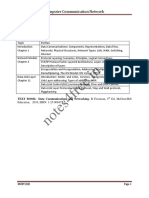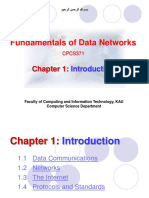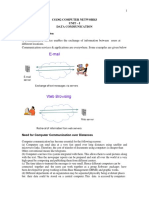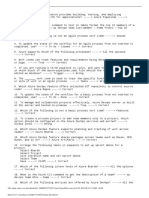0% found this document useful (0 votes)
33 views8 pagesData Communications
The document discusses the key components and fundamentals of data communication systems. It describes that data communication involves sharing information between devices locally or remotely using telecommunication networks. There are five key components - the message, sender, receiver, transmission medium, and protocols. For effective communication, data must be delivered accurately and in a timely manner with minimal jitter to the intended recipient.
Uploaded by
Janmarc CorpuzCopyright
© © All Rights Reserved
We take content rights seriously. If you suspect this is your content, claim it here.
Available Formats
Download as DOCX, PDF, TXT or read online on Scribd
0% found this document useful (0 votes)
33 views8 pagesData Communications
The document discusses the key components and fundamentals of data communication systems. It describes that data communication involves sharing information between devices locally or remotely using telecommunication networks. There are five key components - the message, sender, receiver, transmission medium, and protocols. For effective communication, data must be delivered accurately and in a timely manner with minimal jitter to the intended recipient.
Uploaded by
Janmarc CorpuzCopyright
© © All Rights Reserved
We take content rights seriously. If you suspect this is your content, claim it here.
Available Formats
Download as DOCX, PDF, TXT or read online on Scribd
/ 8

































































































